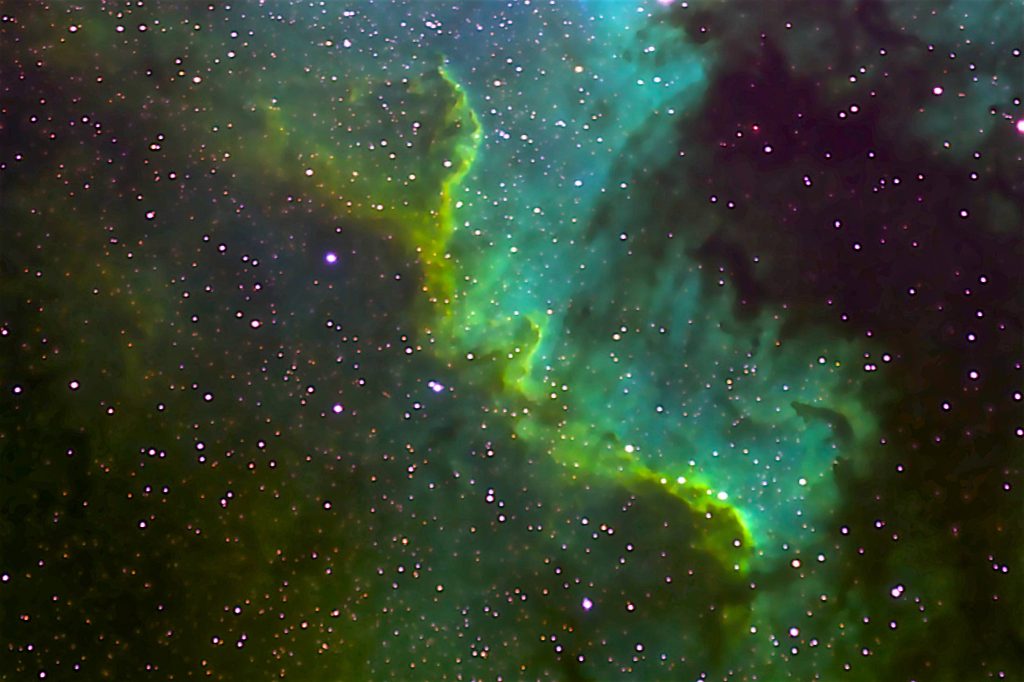This is the North American Nebula, imaged with Narrowband filters, and rendered in the Hubble Palette. Although a false color image, this is the same color mapping that the Hubble Telescope uses to present its famous images. In this image, Hydrogen Alpha is presented as Green, Oxygen III is presented as Blue, and Sulfur II is presented as Red. The Hubble team uses this color mapping to bring out the greatest detail in astronomical images.
The North America Nebula (NGC 7000 or Caldwell 20) is an emission nebula in the constellation Cygnus, close to Deneb (the tail of the swan and its brightest star). The shape of the nebula resembles that of the continent of North America, complete with a prominent Gulf of Mexico. (Wikipedia)
Here is a closeup of the lower section of the nebula, known as the “Cygnus Wall”. This area appears three-dimensional. The Wall exhibits the most concentrated star formations in the nebula.
This is a vast improvement over my last image of this target, even when it was taken under a Bortle 1 sky in Capitol Reef National Park in Utah. My poor Canon 60D camera cannot compete with the dedicated astro-camera and the narrowband filtering system.
Click on the images to see larger versions.
Image Info
- Imaged from Key West, Florida.
- Camera : ZWO ASI1600MM Pro
- Lens: Canon 100-400 f/5.6L lens, set to 400mm
- Mount: iOptron SmartEQ Pro
- Hydrogen Alpha: 21 subframes of 300s = 105 min integration
- Oxygen III: 24 subframes of 600s = 120 min integration
- Sulfur: 24 subframes of 600s = 120 min integration
- Total integration time: 345 min = 5.75 hours.
- Captured via ASIAir Pro automation
- Optical tracking via ASIAir automation, currently using ST4 mount control via the ASI120MM-S guide camera
- Separate channels stacked and SHO integrated in Astro Pixel Processor
- Final processing in Aperture
- Star Defringing in PhotoShop


